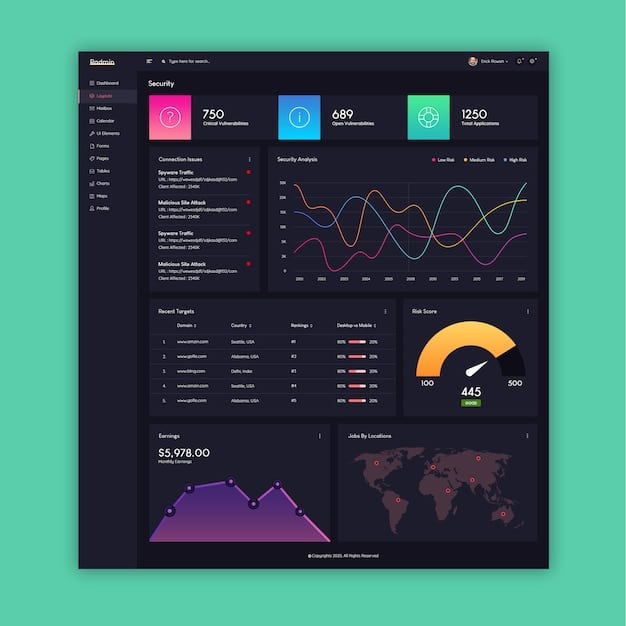The Ultimate Guide to Social Commerce Analytics for US Businesses

The Ultimate Guide to Social Commerce Analytics: Track Your Performance and Optimize Your US Strategy offers actionable insights for businesses in the U.S. to leverage data and improve their social commerce initiatives.
Unlock the power of data-driven decisions in social commerce! The Ultimate Guide to Social Commerce Analytics: Track Your Performance and Optimize Your US Strategy provides U.S. businesses with the knowledge and tools to measure, analyze, and improve their social commerce performance.
Understanding Social Commerce Analytics
Social commerce has transformed how U.S. consumers discover and purchase products. In this section we’ll explore its definition along with the vital aspects of social commerce analytics.
What is Social Commerce?
Social commerce combines e-commerce with social media platforms, allowing U.S. customers to buy products directly within their social networks.
Why Social Commerce Analytics Matters for the US Market
Understanding social commerce analytics empowers U.S. businesses to optimize campaigns, personalize customer experiences, and boost sales.
- Data-Driven Decisions: Analytics provide insights for smarter decisions.
- Personalized Experiences: Understand U.S. customer preferences.
- Improved ROI: Optimize social commerce spending.

In short, mastering social commerce analytics unlocks a competitive edge in the dynamic U.S. market, ensuring strategies are effective and customer-centric.
Key Metrics to Track in Social Commerce
Identifying the correct metrics and tracking are essential aspects of social commerce analytics. This helps to measure performance and improve strategies within the U.S. market.
Engagement Metrics
Engagement metrics illustrate how U.S. customers interact with social commerce content, revealing how users react to this initiative.
Sales and Conversion Metrics
Monitoring sales and conversion metrics provides insights into the effectiveness of turning social interactions into purchases.
- Conversion Rate: Percentage of users completing a purchase.
- Average Order Value (AOV): Average amount spent per transaction.
- Revenue per Visitor: Revenue generated per website visitor.
By tracking these essential metrics, U.S. businesses can refine their strategies, and then optimize their social commerce efforts to drive sales and enhance customer relationships.
Tools for Social Commerce Analytics
Several tools can help U.S. businesses track and analyze their social commerce performance, offering comprehensive data insights and analytics. We’ll discuss some key platforms.
Native Social Media Analytics
Platforms like Facebook Insights, Instagram Analytics, and Twitter Analytics provide built-in tools for tracking performance on their respective platforms.
Third-Party Analytics Platforms
Tools like Google Analytics, Hootsuite Analytics, and Sprout Social offer in-depth social commerce analytics across multiple platforms.
- Cross-Platform Tracking: Centralize data from various social channels.
- Advanced Reporting: Customize reports to highlight key metrics.
- Competitive Analysis: Benchmark performance against competitors.

By leveraging these tools, U.S. businesses can gain a 360-degree view of their social commerce efforts, identify trends, and make data-driven decisions for optimal results.
Implementing a Social Commerce Analytics Strategy
This section will cover the steps with a structured approach, to implement a successful social commerce analytics strategy within the U.S. market.
Define Your Objectives
Clearly define your goals for social commerce to create a targeted analytics plan, which can help in improving the process and revenue.
Set Up Tracking and Reporting
Implement tracking codes and reporting dashboards to monitor key metrics and progress toward objectives.
- Google Tag Manager: Streamline tracking code implementation.
- Data Visualization Tools: Create easy-to-understand reports.
- Regular Audits: Ensure tracking mechanisms are functioning correctly.
Adopting a well-defined analytics strategy ensures that U.S. businesses can effectively measure their social commerce performance, gain valuable insights, and optimize their strategies.
Optimizing Your Social Commerce Strategy with Analytics in the US
Using analytics to enhance social commerce performance in the U.S. market requires a focus on actionable insights and timely adjustments. The objective is to stay proactive and efficient.
A/B Testing
Use A/B testing to compare different approaches and consistently enhance the conversion rates of products.
Personalization
Enhance the customer experience by using data-driven insights to personalize content and recommendations for your U.S. customers.
- Customer Segmentation: Group U.S. customers based on behaviors and preferences.
- Personalized Recommendations: Suggest products based on browsing history.
- Tailored Content: Deliver content aligned with customer interests.
By leveraging these optimization strategies, U.S. businesses can significantly improve their social commerce performance, drive sales, and foster customer loyalty.
Best Practices for Social Commerce Analytics in the US
Following the best practices is essential when working with social commerce analytics. This will ensure accuracy, compliance, and effective utilization of data insights within the U.S. market.
Data Privacy and Compliance
Adhere to data privacy regulations like GDPR and CCPA when collecting and analyzing customer data.
Regularly Review and Update Your Strategy
Periodically review and update your social commerce analytics strategy to adapt to changing market trends and customer behaviors.
- Stay Informed: Keep up with the latest industry news and platform updates.
- Adapt to Trends: Adjust strategies based on emerging social commerce trends.
- Seek Expert Advice: Consult with analytics professionals for guidance.
By following these best practices, U.S. businesses can maximize the value of their social commerce analytics while maintaining ethical standards and regulatory compliance.
| Key Point | Brief Description |
|---|---|
| 📊 Track Engagement | Monitor likes, shares, comments to gauge content effectiveness. |
| 💰 Measure ROI | Assess revenue generated from social commerce initiatives. |
| 🎯 Define Objectives | Set clear goals to focus your analytics efforts. |
| 🔒 Data Privacy | Comply with regulations like GDPR and CCPA for data handling. |
Frequently Asked Questions
▼
Social commerce analytics involves tracking and analyzing data related to sales and customer interactions on social media platforms to improve business performance. It helps in understanding customer behavior to optimize strategies.
▼
It helps U.S. businesses understand customer preferences, optimize marketing campaigns, and improve ROI. This focused approach enhances the brand awareness and maximizes sales potential in the competitive market.
▼
Key metrics include engagement metrics (likes, shares, comments), sales and conversion metrics (conversion rate, average order value), and customer behavior metrics (customer lifetime value). It contributes towards measuring overall performance.
▼
Use A/B testing to refine campaigns, personalize content for better engagement, and optimize product recommendations based on customer data. It contributes to creating a more personal and efficient customer journey.
▼
Adhere to data privacy regulations, regularly review and update your strategy, and use a combination of native and third-party analytics tools. That ensures both compliance and effective utilization of data resources.
Conclusion
In conclusion, mastering social commerce analytics is essential for driving success in the U.S. market. By tracking key metrics, using the right tools, and implementing effective strategies, businesses can unlock new opportunities, enhance customer experiences, and achieve sustainable growth.





